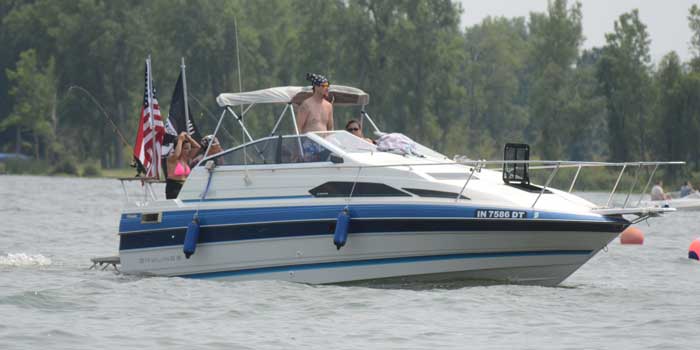Restrictions Remain On Barbee, Tippy Chains and Wawasee Lakes
KOSCIUSKO — The speed restrictions on Wawasee Lake and Tippecanoe chain of lake were issued seven days ago, three days later Barbee chains were added to the list. Those restrictions remain in force for a maximum of 90 days. It could be less if water levels drop.
The Department of Natural Resources will issue a notice to the media when restrictions are lifted.
There have been many questions regarding the restrictions, even some rumors that the lakes are closed to all boat traffic. The rumors are incorrect. The lakes are open, just no boat can be operated above idle speed, except those allowed by statute: watercraft operated by a local, state, or federal governmental law enforcement agency, emergency response personnel or the Department of Natural Resources.
How is the decision made? Who makes the decision? Is there a specific measurement or level of the lake reached to issue a restriction or remove a restriction?
According to several public information officers with the DNR Division of Law Enforcement, the restrictions often follow a complaint of damages or potential damage to permanent structures due to high water. Piers are considered temporary structures by law and can be removed.
Phil Bloom, director, division of communications for IDNR, states the authority to establish boating restrictions is spelled out in an administrative code. This is followed by the Indiana Department of Natural Resources. The code is: 312 IAC 5-12 Temporary Modification or Closure of Public Waters To Boating.
A state statue also covers the length and exemptions for restrictions: Indiana Code 4-21.5-4-5.
“When a water level concern is reported to DNR, our Division of Law Enforcement’s policy provides guidelines for evaluating the situation and making recommendations to the DNR Director on restrictions or closure of public waters. The intent is to be as non-intrusive as is practical to the general public while allowing sufficient protection to the health and safety of property owners and the boating public,” said Bloom.
He provided five possible recommendations outlined in that policy and accompanying conditions:
- Restrict watercraft to daytime operation. Conditions: Large amounts of floating debris and or submerged objects which impose a significant impact to boating safety and/or navigation during night-time operation.
- Limit watercraft operations to idle speed. Conditions: Surface water will likely be inside dwelling structures as a result of wake.
- Prohibit motorboat operations. Conditions: Surface water is inside dwelling structures and motorboat operation, regardless of speed, would cause continued property damage.
- Close lakes to watercraft operations. Conditions: Potential dam failure or other catastrophic incident.
- Any other restrictions. Conditions: Unusual conditions or hazards not covered in steps 1, 2, 3 and 4.
- According to Bloom, when a determination is made at the local level, the conservation officer’s recommendation is run through the command structure — District lieutenant, regional captain, major, division director — for approval and then submitted to the DNR Director for signature of a temporary order.
“Once a temporary order is in place, conservation officers continue to monitor the water levels. In some instances, the presence of U.S. Geological Service water gauges allow them to check water levels on the Internet. In other instances, they monitor levels the old-fashioned way – they show up in person, often on a daily basis.
“They also check weather forecasts, mostly because they don’t want to lift restrictions too soon only to have them imposed again when the next storm blows through,” stated Bloom
Notification
Bloom stated when an order is finalized, news releases are distributed through its Nixle service. DNR Law Enforcement also uses social media, specifically Facebook, and the information is posted at public access boat ramps.
“DNR Communications makes every attempt to re-post the Law Enforcement news release in the newsfeed for the main DNR website. Often times, lake associations assist in spreading the word to their members through whatever channels they have available,” said Bloom.
Once a determination is made to lift a temporary order, it goes through the same process – local officer to his/her district lieutenant.and then up the chain to the DNR Director.

